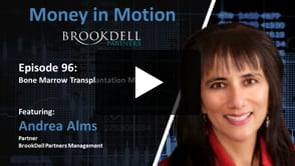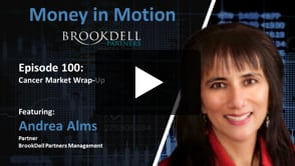Managed Futures Dashboard:
Top Managed Futures News, Listings, Member Posts, Managed Futures Daily Indices and more!
Oil pressure is growing as global storage fills up and OPEC fails to speed up production cuts. There are also criticisms directed at the CME Group for allowing negative oil pricing. Yet negative oil pricing was not a sign that the oil contract was broken. Those negative prices were fixing a problem where the physical market was broken. It shows that the market works and works better with free price discovery afforded to the world by the futures markets. Beyond all the bearishness, the Energy Information Administration (EIA) showed signs that massive demand destruction may have bottomed out and the market might try to look ahead to better days.
The plunge to negative oil prices as WTI came into delivery with more sellers than buyers, created a situation where we witnessed the market working. Despite criticism of the CME Group for allowing negative pricing and the fear that the move into the abyss forever redefined the inherent risk for commodities, in reality, the market did what it had to do. It found buyers for a commodity that no one currently wanted and found storage for that oil that was supposedly nonexistent. Once word got out that they were actually paying people to take oil away, potential buyers for that oil sprung up out of nowhere. Physical buyers of oil who realized that this may be a once in a lifetime opportunity to buy oil and lock in a sizable profit not only tried to take delivery at negative prices but also helped run the market back up out of the whole back into positive territory.
I can tell you that my phone was ringing off the wall with folks telling me they had storage available if I knew of those with oil to sell. They had leases for empty train cars, etc. and one amazing entrepreneur modified storage tanks that held waste water from fracking into tanks that could hold oil. There was no need to use those tanks to hold frack water because everyone has stopped fracking. Yet they can be used to store oil, and because of the futures market, it can be done profitably.
That surge in interest in buying oil that no one wanted was because of the price discovery process. In this case, oil prices had to trade in negative territory to find the level that would make people find a way when people thought there was no way to sell or store that oil. The plunge to negative oil prices was a call to action to find demand and find storage for a commodity that had no buyers and no place to store it.
The May contract’s subsequent settlement at a positive close back over $10 a barrel was a price level based on the contango and was still a profitable deal for those that found storage under the woodwork. That brought confidence to the back-end of the curve and reduces the chances of a sub-zero repeat for the June expiration.
Is another way to find more storage to ban imports of Saudi oil? The Trump Administration is considering that possibility as the Saudis so far have refused to slowdown production or exports ahead of the May 1st start date of the historic OPEC production cuts. According to Bloomberg News, “20 very large crude carriers, known in the industry as VLCCs, that loaded since the beginning of March, each hauling about 2 million barrels each totaling 40 million barrels are headed to American ports on the Gulf and West Coasts. U.S. Senator Ted Cruz, from the oil-producing state of Texas, minced no words and tweeted, “My message to the Saudis: TURN THE TANKERS THE HELL AROUND.” Many U.S. oil producers feel the same way as that believe that Saudi Arabia and Russia conspired to use unfair trade practices to put them out of business. If the tankers are forced to turnaround that will cause Brent crude to crash as that market will have to find a price level that will shake out some storage or buyers that are willing to pay for leasing the tankers until they can be offloaded.
Of course there are still fears that we may see another sharp drop in oil prices in both Brent and WTI and while that is possible, it seems less likely. Yet if it does happen, it will cause the world to react like it did before. Yet by then we will see more production cutbacks and demand start to creep up and hopefully we will see the U.S. economy start its great comeback.
The EIA reports suggest that demand destruction has bottomed out. In a few months or a year will EIA will be focused on production destruction? The EIA reported U.S. crude inventories rose by 15 million barrels in the week to April 17 to 518.6 million barrels, putting them within close to the all-time record of 535 million barrels set in 2017. Barani Krishnan of Investing.com says that, “The U.S. Energy Information Administration is suggesting there is notional space for just another 16 million barrels at the country’s storage hub for crude oil in Cushing, Okla., and that this could fill up by next week based on the average build trends seen this month. Yet on the product side gasoline demand rose last week and suggests that a bottom is in for demand drops. So the demand numbers and some U.S. states reopening suggest the demand destruction is at bottom.
The EIA reported that commercial petroleum inventories increased last week by 25.5 million barrels last week. Total products supplied over the last four-week period averaged 15.0 million barrels a day, down by 25.4% from the same period last year. Over the past four weeks, motor gasoline product supplied averaged 5.5 million barrels a day, down by 41.4% from the same period last year. Distillate fuel product supplied averaged 3.4 million barrels a day over the past four weeks, down by 9.8% from the same period last year. Jet fuel product supplied was down 53.6% compared with the same four-week period last year.
U.S. crude production is falling – sliding 100,000 barrels per day last week to 12.2 million bpd – but really, we will find at the end of the month, the plunge in production will be much larger due to adjustments. We have seen the peak of U.S. production for at least a couple of years.
Thanks,
Phil Flynn
Thing are changing fast so make sure your stay glued to the Fox Business Network because they are invested in you!
Are you getting exclusive content? If you are not you had better call 888-264-5665 right away or email me at [email protected].
Today's Managed Futures Headlines:
Access Over 250K+ Industry Headlines, Posts and Updates
Join AlphaMaven
The Premier Alternative Investment
Research and Due Diligence Platform for Investors
Free Membership for Qualified Investors and Industry Participants
- Easily Customize Content to Match Your Investment Preferences
- Breaking News 24/7/365
- Daily Newsletter & Indices
- Alternative Investment Listings & LeaderBoards
- Industry Research, Due Diligence, Videos, Webinars, Events, Press Releases, Market Commentary, Newsletters, Fact Sheets, Presentations, Investment Mandates, Video PitchBooks & More!
- Company Directory
- Contact Directory
- Member Posts & Publications
- Alpha University Video Series to Expand Investor Knowledge
- AUM Accelerator Program (designed for investment managers)
- Over 450K+ Industry Headlines, Posts and Updates








